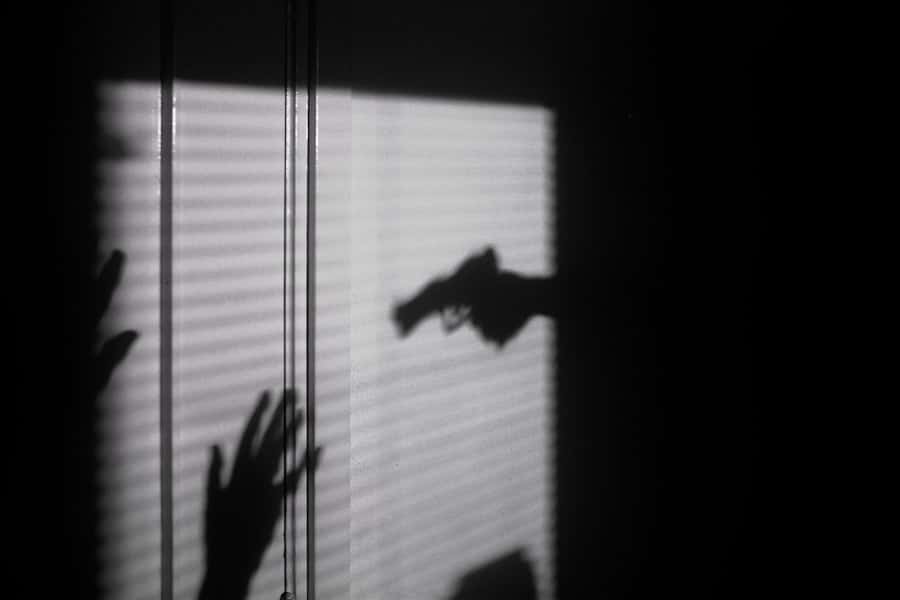Augmented Reality (AR) has emerged as a transformative technology across various sectors, and its application in crime scene investigation is particularly noteworthy. By overlaying digital information onto the physical world, AR enhances the way investigators perceive and analyze crime scenes. This technology allows law enforcement professionals to visualize complex data in real-time, facilitating a more comprehensive understanding of the circumstances surrounding a crime.
As crime scenes can often be chaotic and filled with intricate details, the integration of AR provides a structured approach to gathering and interpreting evidence. The use of AR in crime scene investigation is not merely a futuristic concept; it is becoming an integral part of modern forensic science. With the ability to superimpose digital models, photographs, and other relevant data onto the physical environment, investigators can create a more immersive experience that aids in both analysis and presentation.
This technology not only assists in the immediate investigation but also plays a crucial role in courtroom presentations, where juries must understand the context and details of a case. As AR continues to evolve, its potential to revolutionize crime scene investigations becomes increasingly apparent.
Key Takeaways
- AR technology is revolutionizing crime scene investigation by providing advanced tools for mapping and analyzing crime scenes.
- Using AR technology in mapping crime scenes offers benefits such as improved accuracy, efficiency, and the ability to create 3D models for analysis.
- AR technology enhances accuracy and efficiency in crime scene mapping by allowing investigators to overlay digital information onto the real world, providing a more comprehensive view of the scene.
- Case studies have shown successful crime scene investigations using AR technology, demonstrating its potential to improve the accuracy and speed of investigations.
- AR plays a crucial role in creating 3D models of crime scenes, allowing investigators to analyze and reconstruct the scene in a more detailed and immersive way.
Benefits of using AR technology in mapping crime scenes
One of the primary benefits of utilizing AR technology in crime scene mapping is its ability to provide a detailed and interactive representation of the scene. Traditional methods of mapping often rely on 2D sketches or photographs, which can fail to capture the full spatial relationships and nuances present at a crime scene. AR technology allows investigators to create 3D models that can be manipulated and viewed from various angles, offering a more accurate depiction of the environment.
This capability is particularly beneficial in complex scenes where multiple elements must be considered simultaneously. Moreover, AR enhances collaboration among investigators and forensic experts. By using AR headsets or mobile devices, multiple team members can view the same augmented scene in real-time, regardless of their physical location.
This shared experience fosters better communication and decision-making, as team members can discuss findings and hypotheses while observing the same visual data. Additionally, AR can integrate various data sources, such as witness statements, forensic reports, and environmental conditions, into a cohesive visual framework. This holistic approach not only streamlines the investigative process but also ensures that critical information is not overlooked.
How AR technology improves accuracy and efficiency in crime scene mapping
The accuracy of crime scene mapping is paramount for successful investigations and subsequent legal proceedings. AR technology significantly enhances this accuracy by allowing investigators to capture precise measurements and spatial relationships within the scene. For instance, using AR applications, investigators can measure distances between objects or points of interest with remarkable precision, eliminating the potential for human error that often accompanies manual measurements.
This level of detail is crucial when reconstructing events or establishing timelines based on physical evidence. In terms of efficiency, AR technology reduces the time required to document and analyze crime scenes. Traditional methods can be labor-intensive, involving extensive note-taking and manual photography.
In contrast, AR systems can automate many of these processes by capturing data in real-time and generating visual representations instantaneously. This not only accelerates the initial investigation but also allows for quicker dissemination of information among team members. As a result, law enforcement agencies can respond more effectively to emerging leads or changes in the investigation, ultimately leading to faster resolutions.
Case studies of successful crime scene investigations using AR technology
Several notable case studies illustrate the successful application of AR technology in crime scene investigations. One prominent example occurred during a homicide investigation in a metropolitan area where traditional methods struggled to provide clarity on the sequence of events. Investigators employed an AR system that allowed them to recreate the crime scene digitally.
By overlaying witness testimonies and forensic data onto a 3D model of the location, they were able to visualize how different elements interacted during the incident. This comprehensive view not only clarified timelines but also helped identify inconsistencies in witness statements. Another compelling case involved a robbery at a jewelry store where security footage was limited.
By creating an interactive model that included potential escape routes and locations of stolen items, they could better understand the perpetrator’s actions during the crime. This innovative approach led to the identification of a suspect who had previously gone unnoticed, demonstrating how AR can uncover critical insights that traditional methods might miss.
The role of AR in creating 3D models of crime scenes for analysis
Creating 3D models of crime scenes is one of the most significant contributions of AR technology to forensic investigations. These models serve as dynamic tools for analysis, allowing investigators to explore every aspect of a scene without being physically present. The process typically involves capturing high-resolution images and data points from various angles using specialized equipment such as drones or 3D scanners.
Once this data is processed, it can be integrated into an AR platform where investigators can interact with the model. The ability to manipulate 3D models provides investigators with insights that are not readily apparent through traditional methods. For example, they can simulate different lighting conditions or environmental factors that may have influenced events during the crime.
This capability is particularly useful in cases involving visibility issues or where eyewitness accounts may be unreliable due to poor lighting or obstructions. Furthermore, these models can be used for training purposes, allowing new investigators to familiarize themselves with complex scenarios in a controlled environment.
Challenges and limitations of using AR technology in mapping crime scenes
Despite its numerous advantages, the implementation of AR technology in crime scene mapping is not without challenges. One significant limitation is the need for specialized training for law enforcement personnel. While many officers are adept at using traditional investigative tools, transitioning to AR systems requires a different skill set that may not be readily available within all departments.
This training gap can hinder the widespread adoption of AR technology, particularly in smaller agencies with limited resources. Additionally, there are concerns regarding data security and privacy when utilizing AR systems for crime scene investigations. The integration of sensitive information—such as personal data from witnesses or victims—into digital platforms raises ethical questions about data protection and potential misuse.
Ensuring that these systems comply with legal standards and maintain confidentiality is crucial for maintaining public trust in law enforcement practices. Furthermore, technical issues such as software glitches or hardware malfunctions can disrupt investigations, underscoring the need for reliable systems that can withstand the rigors of fieldwork.
Future developments and potential advancements in AR technology for crime scene investigation
The future of AR technology in crime scene investigation holds immense promise as advancements continue to emerge at a rapid pace. One potential development is the integration of artificial intelligence (AI) with AR systems to enhance analytical capabilities further. AI algorithms could analyze patterns within crime scene data, identifying correlations that may not be immediately apparent to human investigators.
This synergy could lead to more informed decision-making and improved investigative outcomes. Moreover, as AR hardware becomes more accessible and affordable, it is likely that its adoption will increase across various law enforcement agencies. Innovations such as lightweight augmented reality glasses could allow investigators to access critical information hands-free while navigating complex scenes.
Additionally, cloud-based platforms may facilitate real-time collaboration among teams dispersed across different locations, enabling them to share insights and findings instantaneously. As these technologies evolve, they will undoubtedly reshape how crime scenes are investigated and understood.
The impact of AR technology on the future of crime scene mapping and investigation
The integration of augmented reality into crime scene mapping represents a significant leap forward in forensic science. By enhancing accuracy, efficiency, and collaboration among investigators, AR technology has the potential to transform how crimes are analyzed and solved. As law enforcement agencies continue to explore innovative solutions to complex challenges, AR stands out as a powerful tool that can provide deeper insights into criminal behavior and evidence interpretation.
As we look ahead, it is clear that the impact of AR technology will extend beyond mere visualization; it will redefine investigative methodologies and improve outcomes for justice systems worldwide. The ongoing development of this technology promises not only to enhance current practices but also to pave the way for new approaches that prioritize accuracy and efficiency in criminal investigations. The future of crime scene mapping is bright with augmented reality at its forefront, offering unprecedented opportunities for law enforcement professionals dedicated to solving crimes effectively and justly.
In a related article, The Verge discusses the ambitious multimedia effort behind the creation of a new platform for news and entertainment.
Just like in the investigation of crime scenes, AR can play a crucial role in providing a more immersive and interactive experience for users. By incorporating AR into mapping crime scenes, investigators can gain a better understanding of the spatial layout and details of the scene, ultimately aiding in the investigation process.
FAQs
What is AR?
AR stands for Augmented Reality, which is a technology that superimposes digital information such as images, videos, or 3D models onto the real world.
How is AR used in mapping crime scenes for investigation?
AR can be used to overlay digital markers, measurements, and other relevant information onto a real crime scene, allowing investigators to accurately document and analyze the scene.
What are the benefits of using AR in mapping crime scenes?
Using AR in mapping crime scenes can improve accuracy, efficiency, and collaboration among investigators. It can also provide a more detailed and interactive representation of the crime scene.
Are there any limitations to using AR in mapping crime scenes?
Some limitations of using AR in mapping crime scenes include the need for specialized equipment and training, as well as potential technical challenges in accurately overlaying digital information onto the real world.
Is AR widely used in mapping crime scenes for investigation?
While AR technology is increasingly being used in various fields, its use in mapping crime scenes for investigation is still relatively limited but growing.



